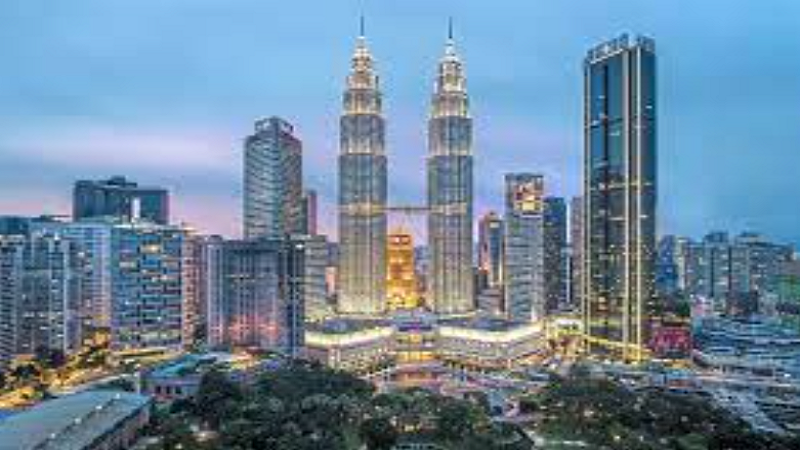The LED lighting has actually come to radically transform how we light our homes, our workplaces, and streets in the current world. Being energy efficient, long lasting and environmentally friendly, LED lighting is gradually becoming a popular product for use by consumers and industries. It is the LED lighting manufacturers that are at the centre of this technological shift, the firms leading the research and manufacture of this and related fast growing technologies. Vorlane aims at identifying key manufacturers in LED lighting, the technology used in LED Lighting Manufacturer and the trends in the market as well as its global implication.
The Rise of LED Lighting
Historical Background
The early foundation of LED can be traced back to the early part of the 20th century but came into practical use in the 1960s. It was first applied in the indicator lights and electronic gadgets, but their application grew for general lighting with the development of technology. The year 2000 was a major turning point that saw a drastic increase in efficiency and brightness of LEDs that hence promoted the use of the technology.
Advantages of LED Lighting
LEDs have advantages over the other types of lighting such as the incandescent and fluorescent lighting. They use much less energy, last much longer, and dissipate less heat. Also, LED is more sustainable than other lighting sources, that it does not include hazardous materials such as mercury. This as has promoted the growth of the LED lighting industry by the manufacturers who have contributed to the enhancement of the technologies and the provision of the LED lighting products to the market.
Key Players in the LED Lighting Industry
Leading Manufacturers
There are now some well defined market leaders that can be observed operating in the LED lighting market. These include:
Philips Lighting: Currently, Philips Lighting is referred to as Signify and is among the biggest and most recognized creators of LED lighting throughout the world. They give product solutions that include consumer bulbs to industrial lighting.
Cree, Inc. : Based in California, Cree is an industry innovator that has concentrated on the LED area with products on both lighting and semiconductors. They are famous for their high performance that comes with LEDs that are applied in various applications.
Osram Opto Semiconductors: It is an Osram’s subsidiary which is focused on the modern LED solutions, the company’s portfolio includes automotive products, industrial applications and LED lighting.
GE Lighting: Ge Lighting is a general electric division is a prominent company in the LED market which deals in energy saving lighting solutions for homes and offices.
Emerging Companies
However, in the present day, there are so many new entrants that are posting impressive performance in the LED lighting business. These small-scale producers are mainly engaged in specialized areas or products with emerging technologies which help in the diversity of the industry.
Technological Advancements in LED Lighting
Increased Efficiency and Brightness
Continuous innovation is being achieved in the production of LED where the efficiency and light output is constantly being enhanced. The latest in LED technology can actually produce more light relative to the amount of power used thus they are more efficient and cheaper in the long run.
Smart Lighting Solutions
The use of smart technology in LEDs is one of the major trends in the lighting business. Smart LED systems may be managed using a smartphone either individually or in combination with home automation systems; this makes it possible to control the LED systems so as to set the preferred lighting intensities, colours, and time. This does not only augment comfort but also results to energy conservation.
Enhanced Colour Quality
LED manufacturers are also bent on enhancing the colour quality index Of their products, more so the CRI. With the increased CRI value LEDs can mimic the natural light source and therefore is ideal for places where colour quality matters such as art work zones, malls and hospitals.
Miniaturization and Flexibility
LED technologies have also improved and transformed the lightings into smaller and more flexible types of lighting. LED strips, panels, and even flexible sheets are preferred and can be applied in architectural lightings or even in flexible electronics devices.
Industry Trends and Market Dynamics
Growing Demand
Currently, the demand for LED lighting is expanding all over the world because of the concern of people for energy consumption and environmental conservation. The global governments and organizations are establishing policies and strategies to promote the use of LED lighting which in turn will help in propelling the LED lighting market.
Cost Reductions
As production processes improve and economies of scale are achieved, the cost of LED lighting continues to decrease. This makes LED solutions more accessible to a broader range of consumers and businesses, accelerating the transition from traditional lighting technologies.
Customization and Personalization
Consumers are increasingly seeking customized lighting solutions that cater to their specific needs and preferences. LED manufacturers are responding by offering a wide range of products with adjustable brightness, colour temperatures, and form factors, allowing for personalized lighting experiences.
Challenges Facing LED Lighting Manufacturers
Competition and Market Saturation
The rapid growth of the LED lighting market has led to increased competition among manufacturers. While this drives innovation, it also presents challenges in terms of pricing and market differentiation. Smaller companies may struggle to compete with established giants, necessitating a focus on niche markets or unique value propositions.
Quality Control
Ensuring consistent quality across products is a critical challenge for LED manufacturers. Variations in performance, lifespan, and colour quality can affect consumer trust and satisfaction. Rigorous testing and quality assurance processes are essential to maintaining high standards.
Environmental Impact
Although LEDs are more environmentally friendly than traditional lighting options, the production process involves materials and processes that can have environmental impacts. Manufacturers are under pressure to adopt sustainable practices, from sourcing raw materials to end-of-life recycling
Conclusion
LED lighting manufacturers are at the forefront of a lighting revolution, driving advancements that benefit consumers, businesses, and the environment. By focusing on innovation, efficiency, and quality, these companies are shaping the future of illumination. As the demand for energy-efficient and sustainable lighting solutions continues to grow, the role of LED manufacturers will become increasingly vital in lighting up our world. click here













